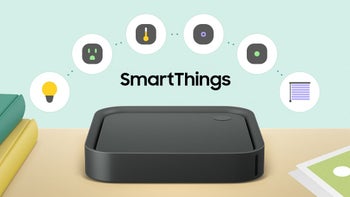Pixel 8 Pro ~ 1-inch camera: Google's most aggressive attempt to crush Samsung, Apple - a mistake?
This article may contain personal views and opinion from the author.

Google, the phone-maker, is changing, and the change includes changes to the camera hardware of the new Pixel 8 Pro, which we expected to see get teased at Google I/O as soon as May 10.
See, Google is famous for paying special attention to the camera of its flagships, which has become the leading selling point of the company’s flagship devices. That being said, the company’s reputation as one of the best camera phone-makers falls on the shoulders of expert image processing rather than class-leading hardware (read: camera sensors, high-quality lenses, complicated stabilization technology).
The living proof for this are two devices called the Pixel 6a and Pixel 7a. As explored in a recent story, the former uses a 12MP Sony IMX363 sensor that’s been in Pixel phones since 2017 - easily the record-oldest camera sensor used in any phone that costs $450 or more. This is why I recently said I can’t quite believe the new Pixel 7a is indeed getting a brand new, 64MP Sony IMX787 camera (according to leaks and rumors).
However, as I said, Google is changing, and (according to reports from reliable tipster Ice Universe) so is the primary camera of the new Pixel 8 Pro. It’s a bittersweet story of switch in strategy, which might be hinting at what Google’s long-term plans for the Pixel lineup look like.
What’s interesting about Samsung’s 50MP GN2 sensor is that this one has only been used in two flagship phones before, and none of them were made by Samsung. The first one is the legendary Xiaomi Mi 11 Ultra - conveniently known for its amazing camera capabilities, while the second one is the not-so-famous Honor Magic 4 Ultra, another Chinese camera monster from 2022.
Of course, when looked in isolation, that’d be a great upgrade, which if nothing else would give Google major bragging rights against Samsung and Apple. Although, as you can see in the photo samples comparing the Pixel 6 Pro’s GN1 and the Xiaomi 11 Ultra’s GN2 50MP cameras, the difference in image characteristics isn’t drastic.
As proven by every Pixel flagship prior to Pixel 6, Google is known for sticking to the same primary camera for years and years while optimizing it for maximum performance - “computational photography” is what once made Google’s cameras great. This time around, however, the Samsung-made 50MP camera found in Pixel 7 and Pixel 7 Pro has only been around for two years/generations (having debuted in the Pixel 6 and Pixel 6 Pro).
You probably already see where I’m going with this one, but I simply don’t feel like Google ever got the hang of the 50MP GN1 sensor in the two years it spent with it - especially compared to the level of optimization it managed to squeeze out of the Sony IMX 363 camera used in over ten Google Pixel phones (including the “A” series)...
What doesn’t make things any better is that the issues mentioned above don’t concern just the Pixel 7 and my Pixel 7 Pro but also the Pixel 6 and Pixel 6 Pro (I used the latter for nearly a year), which use the exact same Samsung GN1 camera.
That leaves us with a couple of possible outcomes if Google was to switch to the GN2 camera sensor for Pixel 8 Pro:
Pixel flagships used to take the most balanced photos in the industry, which is no longer the case. HDR, detail, exposure, noise control, color accuracy, and even Portrait Mode used to be aspects of the smartphone camera dominated by Google somewhere up until the Pixel 4/Pixel 5, but that’s no longer the case.
Today, Samsung flagships like the Galaxy S23 Ultra show wider dynamic range in photos, Xiaomi phones like the Xiaomi 13 Ultra present better detail, while iPhones still take better videos than a Pixel. Sadly, every flagship on the market happens to take better Portrait Mode photos compared to the Pixel 7 and Pixel 7 Pro.
Today, smartphone cameras are progressing incredibly fast, and some companies are taking this whole camera race far more seriously than Google now, which is finding it incredibly difficult to compete.
Xiaomi’s phones use camera sensors familiar from “real” cameras; Apple turned Portrait Mode for photos into a video feature, allowing iPhone to take some of the most stunning videos we’ve ever seen (Cinematic Mode), and Samsung’s flagships can take photos of the moon. And that’s a combined effort of both hardware and software - something Google is finding surprisingly difficult to pull off. Didn’t get the memo, Google?
See, Google is famous for paying special attention to the camera of its flagships, which has become the leading selling point of the company’s flagship devices. That being said, the company’s reputation as one of the best camera phone-makers falls on the shoulders of expert image processing rather than class-leading hardware (read: camera sensors, high-quality lenses, complicated stabilization technology).
However, as I said, Google is changing, and (according to reports from reliable tipster Ice Universe) so is the primary camera of the new Pixel 8 Pro. It’s a bittersweet story of switch in strategy, which might be hinting at what Google’s long-term plans for the Pixel lineup look like.
But now, more about the new (near) 1-inch camera sensor that’s expected to come to Pixel 8 Pro and why this one could be good… and bad news for users.
Pixel 8 Pro to be getting the largest camera sensor available on any non-Chinese smartphone; take a look at camera samples
Samsung ISOCELL GN2. Whether this sounds familiar to you or not, this is the new camera sensor that’s now supposed to bless the Pixel 8 Pro (we don’t know anything about the vanilla Pixel 8 at this point).
- Pixel 6 Pro: 50MP ISOCELL GN1 (1/1.31-inch)
- Pixel 7 Pro: 50MP ISOCELL GN1 (1/1.31-inch)
- Pixel 8 Pro: 50MP ISOCELL GN2 (1/1.12-inch), alleged
- Galaxy S23 Ultra: 200MP ISOCELL HP2 (1/1.3-inch)
- iPhone 14 Pro Max: 48MP Sony IMX803 (1/1.28)-inch)
- Xiaomi 13 Ultra, Oppo Find X6 Pro, Vivo X90 Pro+: 50MP Sony IMX989 (1-inch)
As you can see, the Pixel 8 Pro is now set to become the smartphone with the largest primary camera sensor outside of Chinese flagships like the Xiaomi 13 Ultra and Oppo Find X6 Pro.
Of course, when looked in isolation, that’d be a great upgrade, which if nothing else would give Google major bragging rights against Samsung and Apple. Although, as you can see in the photo samples comparing the Pixel 6 Pro’s GN1 and the Xiaomi 11 Ultra’s GN2 50MP cameras, the difference in image characteristics isn’t drastic.
Usually, a larger camera sensor would provide creamier background blur without the need for Portrait Mode, brighter photos in low-light and overall better images across the board (lower noise, better detail). But as you can see, the difference in sensor size between the Samsung GN1 and GN2 isn’t nearly as big as the difference between the primary cameras in the Pixel 6a and Pixel 7a, for example:
- Pixel 6a: 12MP Sony IMX363 (1/2.55)
- Pixel 7a: 64MP Sony IMX787 (1/1.3)
- Pixel 7 Pro: 50MP Samsung GN1 (1/1.3)
- Pixel 8 Pro: 50MP Samsung GN1 (1/1.12)
That being said, if you look at photos taken with 2x digital zoom, the Xiaomi Mi 11 Ultra (which uses the same primary sensor expected to come to Pixel 8 Pro) actually produces more DSLR-looking snaps than the Pixel 6 Pro (which uses the same primary camera as the Pixel 7 Pro). You can clearly see the stronger background blur effect. So, I guess, the gains in performance will depend on the type of photos you take but they are… there.
Pixel 7 and Pixel 7 Pro cameras are far from perfect, while Google looks ready to move on to new camera sensors on Pixel 8 Pro; are the days of the best “computational photography” on Pixel phones counted?
Now, large camera sensors are great but here’s the thing… Don’t let the alleged jump in camera sensor size on Pixel 8 Pro distract you from the fact that this upgrade comes as a surprise. It’s a controversial one.
You probably already see where I’m going with this one, but I simply don’t feel like Google ever got the hang of the 50MP GN1 sensor in the two years it spent with it - especially compared to the level of optimization it managed to squeeze out of the Sony IMX 363 camera used in over ten Google Pixel phones (including the “A” series)...
My Pixel 7 Pro camera still experiences major Portrait Mode issues, lens flaring problems, and takes noisy videos
- Pixel 7 and Pixel 7 Pro still experience major portrait mode issues such as overprocessing, inaccurate subject isolation, and sub-par detail
- Pixel 7 and Pixel 7 Pro’s primary camera is still the worst performing amongst all flagship phones when it comes to lens flaring - whether that’s during the day (when shooting against the sun) or night (when taking photos with street lights)
- Pixel 7 and Pixel 7 Pro are still the flagship phones with the highest amount of noise (grain) in videos; even videos taken in relatively good lighting can look too noisy
That leaves us with a couple of possible outcomes if Google was to switch to the GN2 camera sensor for Pixel 8 Pro:
- If the camera problems on Pixel 6, Pixel 6 Pro, Pixel 7, and Pixel 7 Pro were caused by hardware (the camera sensor itself), then by switching to the GN2, Google and Pixel 8 Pro might moving towards the right direction (heavy emphasis on the “might” here)
- If the camera problems on Pixel 6, Pixel 6 Pro, Pixel 7, and Pixel 7 Pro were not caused by hardware (particularly the image sensor) but by Google’s lacklustre optimization, then switching to a new camera sensor would mean Google would have to start optimizing this new sensor from scratch - and we know how this is currently going for Pixel 7
Of course, there’s a third option, which is that Google’s once-legendary imaging algorithm was always meant to be combined with a Sony sensor - just like on Pixel 2, Pixel 3, Pixel 4, Pixel 5, and the upcoming Pixel 7a.
This doesn’t necessarily mean Samsung’s cameras “are ruining Google’s flagships” but perhaps hints at the challenges coming with the use of Samsung sensors in combination with Samsung processors - Pixel 6 and Pixel 7 are the first Pixel phones that use a Tensor SoC, which is basically a repurposed Exynos chip.
Pixel phones are losing their camera lead over the competition, and Pixel 8 Pro might not be able to change that
All in all, as a smartphone camera enthusiast, one thing has been clear to me for about three years now - the days of the Google Pixel camera reign are over.
What Google has left is the mid-range category - this one will likely continue to be dominated by Google’s new Pixel 7a and its brand new camera system (64+13+13MP). But that’s only because other brands don’t try hard enough when it comes to mid-range phone cameras.
Today, smartphone cameras are progressing incredibly fast, and some companies are taking this whole camera race far more seriously than Google now, which is finding it incredibly difficult to compete.
But let’s see if Pixel 8 Pro can bring back Google to the top of the smartphone camera chain. My guess is that this will be a nearly impossible task. I mean have you seen what the Xiaomi 13 Ultra can do?
Follow us on Google News













Things that are NOT allowed:
To help keep our community safe and free from spam, we apply temporary limits to newly created accounts: